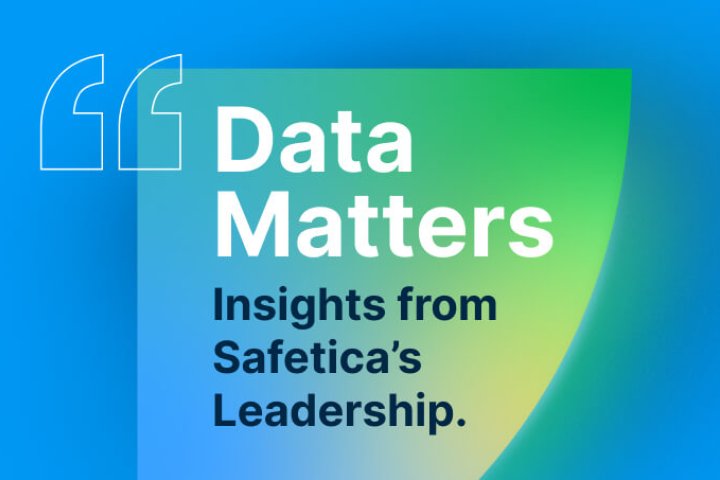Fintech is one of the fastest-moving parts of the financial services industry—driven by cloud platforms, mobile apps, and AI-powered personalization. But speed comes with risk. Every transaction, loan, or investment involves sensitive financial and personal data, making fintech companies prime targets for data loss incidents, cyberattacks, and regulatory scrutiny.
In 2025, data loss prevention in fintech isn’t just about avoiding breaches—it’s about meeting strict frameworks like GDPR, DORA, and PCI DSS, avoiding fines, and protecting the customer trust your business depends on.
This article explains the leading fintech data loss risks, the compliance regulations shaping the sector, and the practical steps—including modern DLP tools—that help safeguard sensitive data and keep your company on track for growth.
The impact of data loss on fintech companies?
Data loss hits fintech especially hard because the entire business model is built on trust, speed, and compliance. A breach doesn’t just mean cleanup costs—it can stall growth, drive customers to competitors, and invite regulatory scrutiny.
- Financial costs: IBM’s Cost of a Data Breach Report 2025 puts the average financial services breach at USD 5.56 million, one of the highest of any sector. For fast-scaling fintechs, that can erase entire funding rounds.
- Reputation damage: More than half of organizations report long-term reputational harm after a breach. In fintech, where customers often choose you over a bank because of trust and innovation, that damage can be fatal.
- Operational disruption: Downtime halts transactions, loans, or trading services—every hour counts. Smaller fintechs may lack the redundancy of big banks, making recovery slower.
- Regulatory pressure: Data loss incidents trigger mandatory reporting and can bring fines under GDPR, DORA, PCI DSS, or state laws, depending on where you operate (details about regulations below).
Bottom line: in fintech, one serious incident can threaten both survival and future growth.
Main causes of data loss in fintech (and how to prevent them)
Fintech platforms collect and process massive amounts of sensitive data—from payment details to behavioral insights used for personalization. The more data handled, the bigger the target. In 2025, attackers are exploiting not just system flaws but also AI-powered tools, while regulators are tightening expectations on how fintech protects customer information. Below are the leading risks fintech firms face today, along with proven ways to reduce them.
Fintech data breach risks
Fintech data is highly valuable, which is why breaches are both frequent and costly. IBM’s 2025 Cost of a Data Breach Report puts the average financial services breach at USD 5.56 million. And while systems can be restored, reputational damage often lingers much longer—eroding customer trust and attracting regulatory scrutiny.
Mitigation:
- Encrypt data at rest and in transit.
- Patch vulnerabilities quickly.
- Require MFA on all accounts.
- Use a DLP solution to monitor and control sensitive data flows.
Cloud security risks in fintech platforms
Cloud-native infrastructure enables fintech growth, but it also introduces risks if controls are weak. Misconfigured APIs, poor access management, or insider misuse of cloud data can all lead to breaches. Cloud risks aren’t only about outside attackers—insiders with excess privileges or mishandling data in cloud apps are a rising issue too.
Mitigation:
- Encrypt sensitive data before storing it in the cloud.
- Enforce MFA and strict access controls.
- Run regular cloud security audits.
- Secure APIs to prevent unauthorized access.
Further reading: Data encryption: how it works and why your business needs it
Data sharing and third-party risks in fintech
Partnerships and integrations are core to fintech, but sharing customer data with vendors or partners expands the attack surface. Weak links in the supply chain are increasingly exploited—s upply-chain and third-party compromises are rising and are a top vector in Verizon’s 2025 DBIR.
Mitigation:
- Vet vendor security practices before sharing data.
- Use clear contractual obligations for data protection.
- Audit and monitor third-party data handling regularly.
Insider risks in fintech
Not every threat comes from outside (Have you seen our article about 7 insider risk management strategies?). Employees and contractors with legitimate access can expose sensitive fintech data through negligence or intent. IBM’s 2025 report found malicious insider incidents average USD 4.92M in costs. For fintechs, that risk shows up when a developer uploads production data to a personal cloud, or when a disgruntled employee exfiltrates customer records.
Mitigation:
- Apply least-privilege access so staff only see the data they need.
- Monitor activity on sensitive data to flag unusual behavior.
- Enforce strong offboarding processes to immediately revoke access.
- Foster a culture where staff can report mistakes or concerns early.
Further reading: How to set up safe offboarding processes
Personalized data use and privacy risks in fintech
Fintech relies on personalization but storing and repurposing large volumes of customer data increases risk. Collecting unnecessary data or reusing it beyond its original purpose can lead to compliance violations and eroded trust.
Mitigation:
- Follow strict data minimization and retention policies.
- Run privacy impact assessments to identify risks.
- Be transparent with users and get consent for secondary data uses.
- Provide opt-out options for customers.
Human error: the top cause of fintech breaches
Most breaches aren’t malicious—they’re mistakes. Verizon’s 2025 DBIR found 60% of incidents involved a human element: misdirected emails, weak passwords, or someone clicking a phishing link. In fintech, even a small slip can expose sensitive PII and trigger compliance reporting.
Mitigation:
- Provide continuous phishing and social engineering training (not just annual sessions).
- Run simulations, including AI-generated phishing and voice scams.
- Simplify policies so staff know exactly what’s expected of them.
- Encourage fast reporting of suspicious activity without fear of blame.
Further reading: How to Educate Employees About Data Security
Data breach response plan for fintech: 5 key steps
Even with strong defenses, no fintech business can assume it’s immune. Having a tested response plan is the difference between a contained event and a full-blown crisis.
- Contain immediately
Isolate affected systems, disable compromised accounts, and cut off network access where needed. Preserve logs for forensic review. - Assess scope and severity
What type of data was compromised—payment data, PII, or partner integrations? Do backups exist? Which customers or regions are impacted? - Call in experts fast
Involve your internal security team, legal/compliance staff, and—if needed—outside forensics and cyber counsel. Early expert input can cut costs and ensure regulatory timelines are met. - Notify regulators and customers
GDPR, DORA, CPRA and other frameworks require fast disclosure (often 72 hours). Communicate clearly with regulators, partners, and affected customers about what happened and what you’re doing. - Review and improve
A breach shouldn’t end at recovery. Run a post-incident review: what failed—human, process, or tech? Close gaps, update policies (including AI use if relevant), and test your defenses.
Key data security regulations for fintech firms
Fintech grows by moving fast, but regulators expect you to stay secure while you scale. In 2025, stricter rules across regions are raising the bar. Here’s what you need to know—and how to prepare.
Financial-sector specific regulations
- DORA (EU, effective January 2025): Puts strict expectations on ICT risk management, vendor oversight, and incident reporting.
Action: Map your ICT vendors, rehearse incident reporting, and close resilience gaps before regulators test you. - PCI DSS 4.0 (global, future-dated controls become mandatory 31 March 2025): Updated payment card security rules with stronger authentication and continuous monitoring.
Action: Review authentication flows, run PCI scans, and make monitoring continuous—not once a year. - GLBA + FTC Safeguards Rule (U.S.): Requires financial institutions to safeguard consumer data with updated risk assessments and vendor management.
Action: Update your risk assessment annually, train staff on safeguarding rules, and tighten vendor contracts.
Broad data protection regulations
- GDPR (EU/EEA): Still the toughest privacy law, with fines up to €20M or 4% of turnover. Covers data minimization, lawful processing, and user rights.
Action: Keep a clear data inventory, run privacy impact assessments, and document consent. - CCPA/CPRA + other U.S. state laws (e.g., VCDPA): A growing patchwork of state laws with strict breach notification deadlines and stronger consumer rights.
Action: Build consumer data request workflows, and prepare to notify affected individuals without unreasonable delay (state timelines vary; California currently uses a ‘most expedient’ standard and is considering a 30-day rule). - ISO/IEC 27001: Not a law, but a global security standard—and often mandatory in vendor due diligence.
Action: Align your ISMS to ISO 27001 and test controls regularly. - UK Data Protection and Digital Information Bill: Will reshape the UK’s post-GDPR framework with tighter obligations for handling personal data.
Action: Review your data transfer practices and update privacy notices ahead of enforcement.
Regional frameworks for fintech
- SAMA Cybersecurity Framework (Saudi Arabia): Compulsory for banks and fintech companies, focused on governance, risk management, and supplier oversight.
Action: Strengthen governance, enforce supplier due diligence, and document risk treatment plans.
Note: Depending on your market and data type, other frameworks and guidelines may apply—for example HIPAA (for health data) or Australia’s Essential Eight.
How Safetica helps fintech prevent data loss
Most fintechs already encrypt data, patch systems, and train staff. But breaches still happen when files get uploaded to AI tools, sensitive records are saved to personal laptops, or customer data is emailed to the wrong recipient. That’s where Safetica comes in.
Safetica’s Data Loss Prevention (DLP) software gives you:
- Visibility into sensitive data – know where customer and payment data is stored, how it’s used, and where it’s moving.
- Policy enforcement – control how data flows across email, cloud apps, USBs, and APIs, reducing the chance of accidental or malicious leaks.
- Real-time alerts – detect risky behavior before it escalates into a breach.
- Compliance support – map your security controls to frameworks like GDPR, PCI DSS, ISO 27001, and DORA, so audits don’t become fire drills.
Safetica works across endpoints, cloud services, and Microsoft 365, with deployment that takes weeks—not months.
Explore how Safetica helps fintech firms reduce insider risk, stay compliant, and maintain customer trust → schedule a demo call
Next articles

The Age of Data: Why Cloud Growth Raises New Security and Ethics Risks
As cloud adoption surges, security and ethics struggle to keep up. Safetica’s CTO shares how organizations can manage risks in the era of data at scale.
